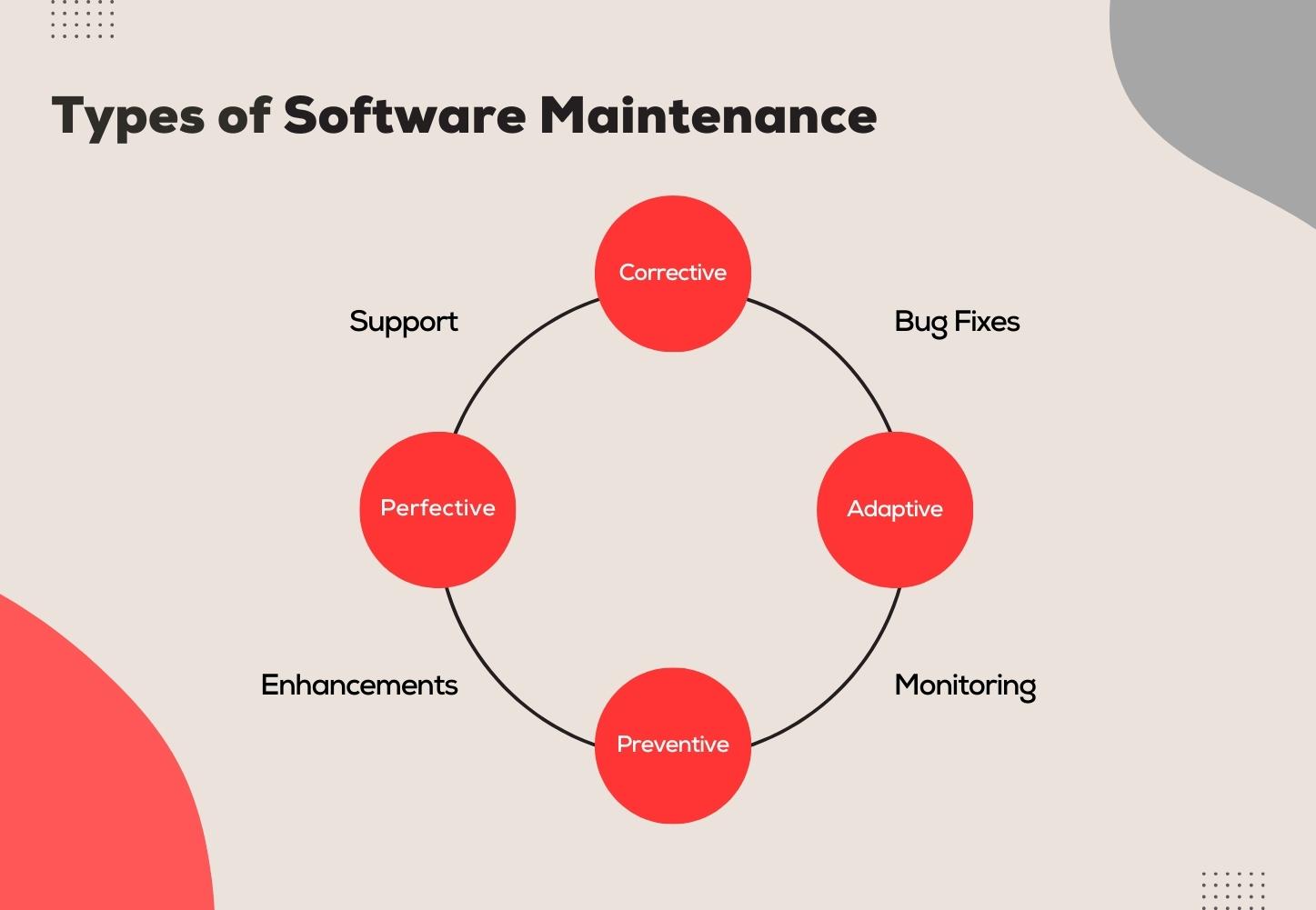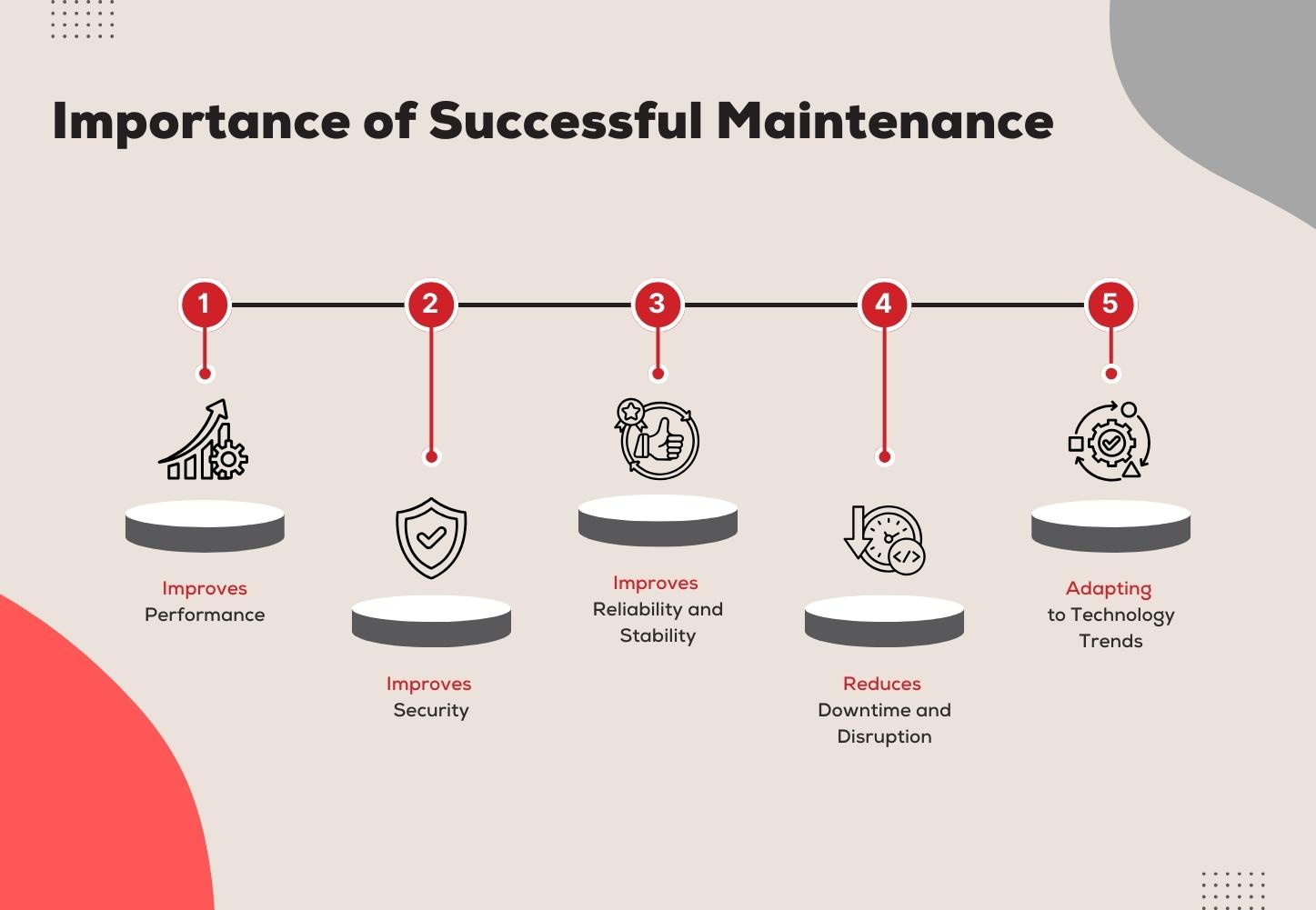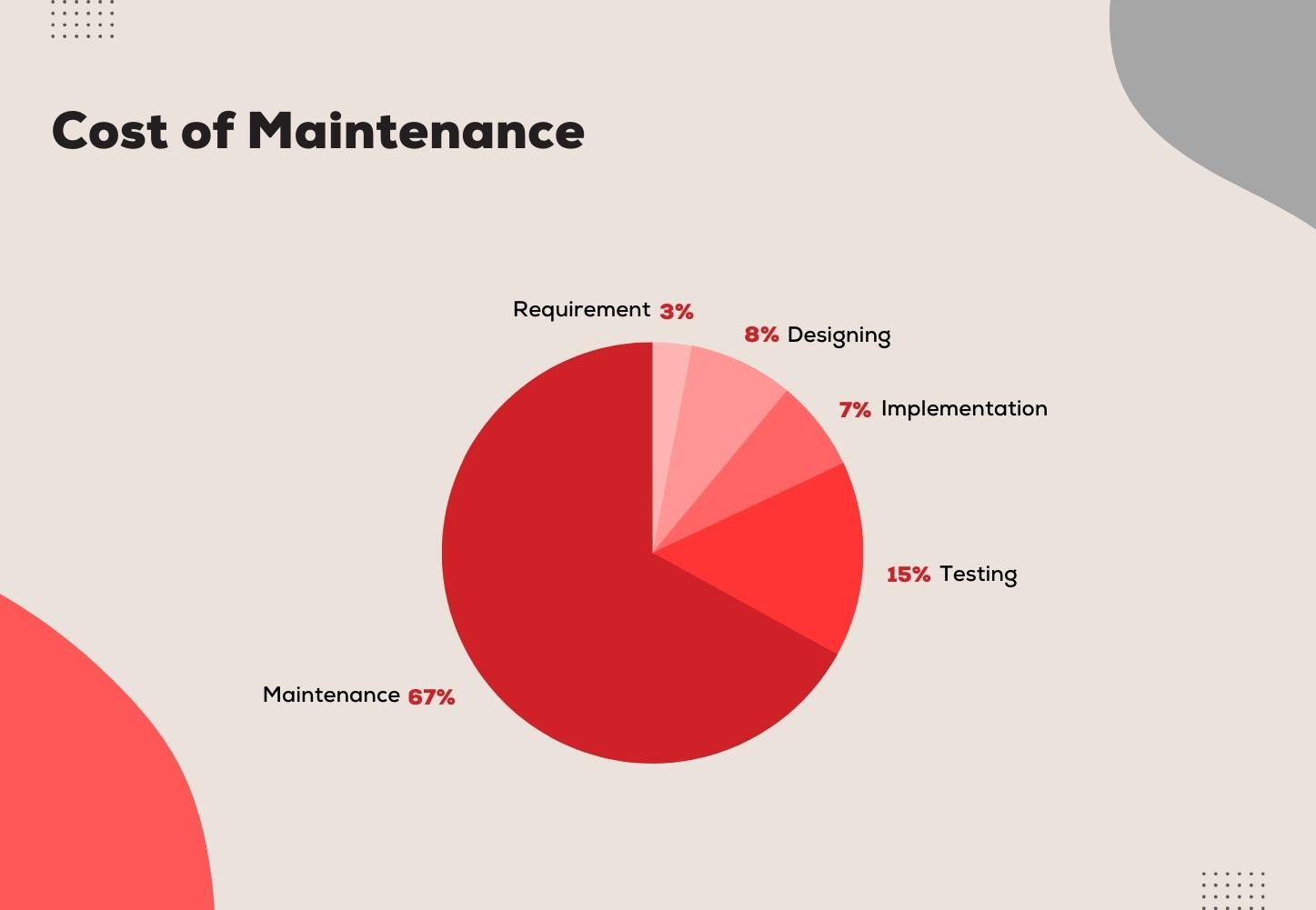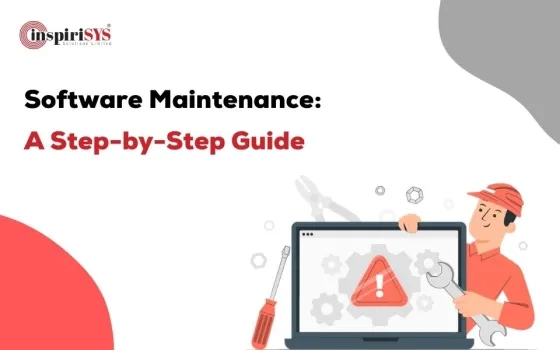The journey of software doesn't conclude at its launch; rather, it marks its commencement. To ensure its seamless operation, maintenance is of paramount importance.
Software plays a significant role in managing customer relationships. However, implementing software alone cannot guarantee business success. Therefore, maintaining the software is necessary to ensure its consistent functionality over time. Delve deeper to know more about software maintenance.
Software Maintenance
In simple terms, software maintenance indicates the process of updating, performance improvements, bug fixing and feature enhancement. It is also regarded as a component of the software development lifecycle. Software maintenance commences immediately after the software is released, and this ongoing process persists throughout the entire development cycle.
The primary goal of effective software maintenance is to ensure the software application functions properly, securely, and efficiently, while also meeting user requirements. Additionally, the goal is to improve the system’s performance, enhance reliability and functionality, and necessitate regular execution.
Types of Software Maintenance
Maintenance types serve various functions and purposes. Software maintenance is classified into four types: Corrective, Adaptive, Perfective, and Preventive care. Let us now take a glimpse of each of these types.

Corrective Software Maintenance
Bugs and errors are unavoidable in a functioning system. This is where corrective maintenance comes into play. It identifies and rectifies bugs in software products. These bugs can be analysed through testing or monitoring. Continuous testing is conducted to ensure that the issue has been successfully resolved.
Adaptive Software Maintenance
This type of maintenance is used when the business environment of the software changes. The main goal of adaptive software maintenance is to ensure that the software product remains suitable for the modified environment. The maintenance in this step involves testing, monitoring and updating the database.
Perfective Software Maintenance
As the name implies, certain improvements are made to the software to enhance performance or usability. Perfective maintenance focuses on enhancing the software’s features to align with the business environment. Unnecessary code can be eliminated to make the existing code more efficient.
Preventative Maintenance
Preventative software maintenance is often conducted to prevent issues at an early stage. Its maintenance services help in taking measures such as updating comprehensive documentation, reviewing, optimizing and testing. Preventative software maintenance revolves around active approaches and support mechanisms to avoid major problems.
Importance of Software Maintenance
A question frequently arises: Why is software maintenance necessary? Let's delve deeper to comprehend the significance behind software maintenance.

a) Improves Performance – By addressing the issue that impacts speed and efficiency, the software's performance can be enhanced. Inefficient code, hardware limitations, and memory leaks can lead to performance issues. Therefore, consistent monitoring can assist developers in rectifying errors and bugs, ultimately resulting in more efficient software.
b) Improves Security – Security risks are constantly evolving, and the system needs to adapt to these changes. Regular Software maintenance ensures that the software remains secure. Regular updates can decrease the risk of security flaws.
c) Improves Reliability and Stability - When routine software maintenance is performed, it becomes easier to address and correct bugs and errors. This, in turn, enhances reliability and stability.
d) Reduces Downtime and Disruption – One of the major benefits of regular software maintenance is that it helps reduce downtime. There are numerous reasons why downtime may occur. The reasons include system failures, security breaches, and errors. Thus, regular monitoring helps to identify and solve the issue.
e) Adapting to Technology Trends – As technology is witnessing a consistent change, it is important to regularly keep it updated. This allows the developers to maintain and alter the existing trends by adding new features, optimising performance and improving compatibility. As a result, this ensures that the software is valuable for users.
Need for Maintenance
The need for regular software maintenance includes the following reasons:
- Modifying The Components
- Improving System Efficiency
- Correcting Errors
- Minimising Unwanted Side Effects
- Fixing Bugs
- Upgrading Software
- Increasing Scalability
- Improving Designs
- Increasing The Deployment Options
- Changing Organisation Structure
Best Practices for Software Maintenance
The world of software Maintenance is a bit complex. But holding on to industry best practices can keep you on track. To ensure a smooth process, certain practices should be followed.
Initially, maintaining proper documentation is of utmost importance. Effective documentation should include information like the software’s design, codebase and architecture. The developers are responsible for keeping the docs accurate and up to date. Second, regular inspections are required. This aids in the identification and resolution of problems and errors.
Benefits of Software Maintenance
Let’s now look at the core benefits of regular software maintenance. Here is a list of benefits that will help your software.
Monitoring Software Functionality: Regular maintenance plays a crucial role in overseeing the proper functioning of the software. This involves keeping a vigilant eye on its performance, identifying potential issues, and ensuring everything runs smoothly.
Enhancing Security: Security updates are a critical aspect of maintenance. These updates, which often involve updating software components, are essential for safeguarding the software against attacks and threats from malicious actors. Maintenance serves as a vehicle for implementing these crucial security measures.
Customer Satisfaction: Keeping software up-to-date and relevant directly contributes to customer satisfaction. Users are more content when they have access to a software solution that aligns with their needs, is free from glitches, and remains responsive to their requirements.
Extending Software Lifespan: Maintenance effectively elongates the life of software by addressing issues and preventing potential pitfalls. This proactive approach not only saves money that might otherwise be spent on fixing major problems but also enhances the overall longevity of the software.
Fostering Collaboration: Maintenance often involves collaboration among various teams, including developers, testers, and support personnel. This cross-functional collaboration enhances communication and understanding between these teams, leading to a more cohesive and effective software maintenance process.
Aligning with Business Needs: Consistent software maintenance is attuned to the evolving needs of the business. It ensures that the software continues to serve its intended purpose, adapt to changing requirements, and contribute positively to the organization's productivity and growth.
Challenges
Having examined the benefits of software maintenance, let's delve into the challenges that practitioners often encounter:
Cost and Time: One of the most common hurdles is the cost associated with software maintenance. It can be a resource-intensive process in terms of both time and money, especially for complex systems.
Complexity of Updates: Updating software systems can be intricate. Integrating new features, improvements, and security patches while maintaining the integrity of the existing system requires careful planning and execution.
Introduction of New Issues: Fixing bugs and issues during maintenance can sometimes introduce new problems inadvertently. This makes post-maintenance testing and quality assurance crucial to ensure that the software remains stable and functional.
Compatibility Concerns: Changes made during maintenance can lead to compatibility issues with other software components or hardware. Ensuring seamless compatibility is essential to prevent disruptions and ensure smooth operation.
Documentation and Delays: Inadequate or outdated documentation can lead to delays in the maintenance process. Comprehensive documentation is necessary to understand the software's architecture, functionality, and past changes, making future maintenance smoother.
Software Maintenance Cost
The software maintenance cost entirely depends on the types of maintenance conducted. It is typically expensive due to the combination of hardware, labour, and software expenditures. Here is a list of factors that influence the cost of software maintenance:
1. Software Lifecycle Processes – When software becomes outdated, the initial hardware is modified, thus exceeding the cost.
2. Dependent on External Environment – While the software relies on the external environment, it should be adjusted when required.
3. Software Domain - The system software may not change when the system domain is well-defined.
4. Documentation – The cost of maintenance can be lowered if the documentation is done properly.
5. Programming Language – Programs written in high-level programming languages like c ++, Java, Ruby, Python, Pascal, and Delphi are easier to understand than those written in low–level languages.
6. Program Validation and Testing – Whenever testing and validation are done, fixing bugs can be easier, thereby reducing the cost. The type of error determines the cost. These errors can be quite expensive.
According to a recent survey, 67% of the cost is connected to maintenance.

Following the above-listed steps can help us reduce the cost modification.
Maintenance Activities
In the software development process, the maintenance phase is the most crucial. Therefore, the process is well executed through the process called the Software Maintenance Life Cycle. The maintenance phase is taken into 7 different phases. Here, goes the maintenance activity list.

Identification and Tracing
This step involves identification and modification of maintenance. This can be generated by users. The modifications are examined and classified according to the maintenance requirements.
Analysis
For potential security implications in the future, the modification is thoroughly analysed. If the potential impact is significant, an alternative solution is pursued. This phase also involves exploring the feasibility of implementing the necessary changes.
Design
A new set of modules that require replacement is designed based on essential specifications. The new framework is determined according to the analysis results.
Implementation
The new software is implemented during this phase. Additionally, a structured design aids in creating the new module. Simultaneously, testing is conducted in parallel. New code is generated, and further specifications are added.
System Testing
The newly added codes and specifications are tested by the software developers in this phase. Moreover, testing is carried out between the system and new modules. Eventually, the entire system is tested by following the testing procedures. If any additions or changes are necessary, they are integrated during the system testing phase.
Acceptance Testing
To check the implemented specifications, a dummy software is performed. It is used to check the working conditions of the software. Finally, with the help of users, the system is tested for acceptance.
Delivery
After the acceptance test, the next step is delivery. The system is distributed all over the organisation. Thereafter, the final testing is done after the delivery process. The delivery of the software is given to the users when the testing phase is cleared.
Maintenance Management
Maintenance management is an essential part of system maintenance. It is done with version control tools to control versions, patch management and semi-versions.
Summing Up
To conclude, regular software maintenance is essential for your software. Maintenance is not a separate process but a fundamental part of the development process. Similarly, if you wish for optimal business growth, software maintenance is necessary. Additionally, it helps you save money and resolve bugs. Through the process of regular updates, collaborations, and proactive monitoring, organizations can acquire a competitive advantage.
So it's a good time to take a look at the process of software maintenance and keep our software away from correcting errors, which are bugs and errors. Hence, maintenance is the key to keeping your software safe and secure.




















